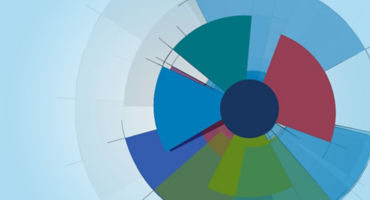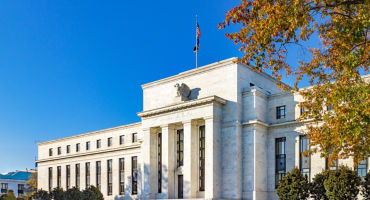Central bank-induced recession not imminent
The Fed intends to tighten financial conditions in an effort to alleviate the effects of higher inflation, but it will likely be mindful of the attendant risks to the economic cycle. Specifically, I expect the Fed to remain keenly cognizant of the danger of tightening policy too aggressively against a backdrop of heightened geopolitical tensions. This type of measured approach should further contribute to the “stickiness” of inflation and could raise the odds of a stagflationary outcome (i.e., high inflation in tandem with slowing growth).
That being said, I think a lot would need to go wrong in order for US economic growth to contract in the period ahead. All else being equal, it would likely take one to two years of steady Fed interest-rate hikes for tighter monetary policy to tip the US economy into recession. Projections by the Fed and futures markets have the policy rate increasing to 2.8% and 2.6%, respectively, by the end of 2023 — only slightly above the neutral rate and not overly restrictive, in my view.
Some sectors may benefit from higher inflation
While inflation can indeed erode the returns provided by traditional high-grade, rate-sensitive fixed income assets, I believe a number of bond sectors can prove resilient and even be net beneficiaries of higher inflation, including persistently elevated energy prices.
Obvious choices for sectors that can potentially benefit from inflation include bank loans (given the floating-rate nature of their coupons, which reset higher as interest rates rise) and Treasury Inflation-Protected Securities, aka TIPS (since their coupons are directly indexed to, and thus protected from, inflation). I also expect high-yield corporates, convertible bonds, securitized credit, and emerging markets (EM) local debt to outperform most traditional high-grade fixed income sectors in a rising-rate/high-inflation environment, particularly if the global economic expansion continues throughout 2022 and beyond. Some points to consider:
- Floating-rate bank loans, high-yield corporates, and convertible bonds have actually exhibited flat to negative empirical durations over time, meaning these credit sectors have historically generated positive total returns during periods of rising US Treasury yields.
- Within structured finance, non-agency residential mortgage-backed securities (RMBS) stand out, where solid fundamentals remain intact and the collateral typically benefits from rising home prices, which I expect to persist amid scant supply.
- For similar reasons, inflation also tends to favor commercial real estate, although not all property types are created equal. We currently see the best opportunities in single-asset, single-borrower deals.
- EM debt remains vulnerable to geopolitical flare-ups, but many local markets are under-owned by foreign investors. EM central banks are well ahead of the Fed in hiking rates to help blunt inflation, while high commodity prices are a boon to some EM commodity exporters.
Bottom line: Be opportunistic in the credit markets
While my outlook for the US credit cycle has worsened somewhat on the back of tighter financial conditions and significant inflationary pressures, I still do not believe a central bank-induced recession is around the corner. I am seeing plenty of investment opportunities in today’s environment in spite of — in fact, because of — the high levels of economic uncertainty and market volatility that have characterized 2022 so far.

























Monthly Market Review — November 2025
Continue readingBy